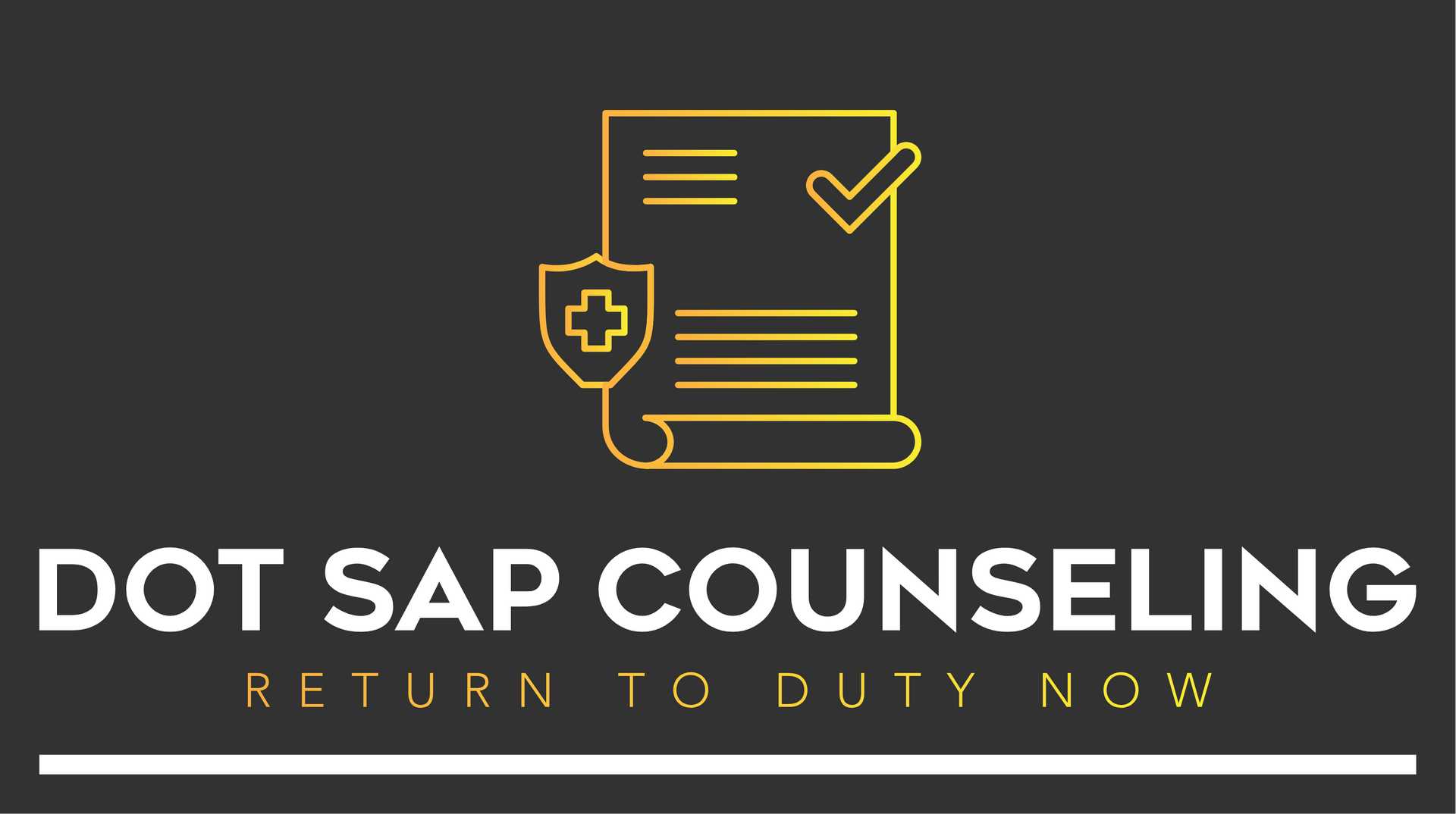DOT SAP Near Me: Find the Best Substance Abuse Professionals for CDL Return to Duty
DOT SAP Counseling services all CDL operators in the states of California AND Arizona.
If you're a CDL (Commercial Driver’s License) holder dealing with a DOT (Department of Transportation) violation due to a failed drug or alcohol test, finding a DOT SAP near you is your top priority.
The Substance Abuse Professional (SAP) program is the only way to get back into compliance with DOT regulations and return to duty legally.
In this guide, we’ll cover everything you need to know about finding a qualified DOT SAP provider near you, the SAP process, and how to get back on the road as quickly as possible.
What is a DOT SAP?
A Substance Abuse Professional (SAP) is a licensed specialist trained to evaluate and guide CDL drivers through the DOT return-to-duty process after a failed or refused drug or alcohol test.
The SAP’s role is to ensure that drivers receive the proper treatment and education before they can resume safety-sensitive duties.
The SAP process is regulated by the Federal Motor Carrier Safety Administration (FMCSA) under 49 CFR Part 40. This means that all SAPs must follow strict guidelines set by the DOT.
So
Why Do You Need a DOT SAP?
If you’ve tested positive for drugs or alcohol, refused a test, or violated DOT regulations in any way, you’re prohibited from performing safety-sensitive duties, including driving a commercial vehicle.
To return to work, you must:
- Complete an SAP evaluation.
- Follow the recommended treatment or education plan.
- Complete a follow-up evaluation.
- Pass a DOT return-to-duty drug and/or alcohol test.
- Undergo follow-up testing as required by your employer.
*Without completing this process, you cannot legally drive under DOT regulations.*
How to Find a DOT SAP Near You
Finding a DOT SAP near you can feel overwhelming, but there are several ways to locate a qualified provider:
1. California or Arizona CDL Operator?
Contact DOT SAP Counseling today for an evaluation and appointment, and Return to Duty Now!
2. Search Online Directories
Several professional organizations maintain directories of qualified DOT SAP providers, including:
- National SAP Directory
- Association for Addiction Professionals (NAADAC)
- American Substance Abuse Professionals (ASAP)
3. Ask Your Employer or Union
If you’re currently employed, your company may have a list of approved SAP providers. If you’re a member of a union, they may also have recommendations.
4. Contact Local Drug & Alcohol Treatment Centers
Many licensed substance abuse professionals work within rehab facilities, mental health clinics, and counseling centers. A quick call to these locations can connect you with a DOT-approved SAP.
5. Find a Virtual SAP Provider
Thanks to telehealth, you can now complete your SAP evaluation online. This is a convenient option if you live in a remote area or need to start the process quickly. Many virtual SAP providers are FMCSA-certified and can conduct evaluations via video calls.
6. Use the FMCSA Clearinghouse
The FMCSA’s Drug & Alcohol Clearinghouse allows employers, drivers, and SAPs to track violations and the return-to-duty process. Many SAP providers are registered in the Clearinghouse, making it a great starting point.
What to Expect During the DOT SAP Process
The SAP process follows strict guidelines to ensure that drivers are fit to return to duty safely. Here’s what you can expect:
Step 1: Initial SAP Evaluation
The SAP will conduct a comprehensive face-to-face or virtual evaluation to assess your substance use history and determine the necessary level of treatment or education.
Step 2: Treatment or Education Program
Based on your evaluation, you’ll need to complete:
- Education programs (such as online courses or in-person classes)
- Counseling or therapy sessions
- Rehabilitation (for more severe cases)
Step 3: Follow-Up SAP Evaluation
Once you’ve completed the required program, you’ll have a second evaluation to confirm compliance. The SAP will determine if you’re ready to return to work.
Step 4: DOT Return-to-Duty Test
After the SAP gives the green light, you must take a return-to-duty drug and/or alcohol test. This test must be conducted under DOT rules and come back negative.
Step 5: Follow-Up Testing Plan
Once you return to duty, your employer must implement a follow-up testing schedule. This can include at least 6 unannounced tests over 12 months (or longer, depending on the SAP’s recommendations).
Conclusion: Get Back on the Road with a DOT SAP Near You
If you’ve failed a DOT drug or alcohol test, you’re not alone. The SAP process exists to help CDL drivers return to work safely and legally.
DOT SAP Counseling is here to assist all California and Arizona CDL operators with their Return To Duty necessities.
Contact us today and Return To Duty Now!











